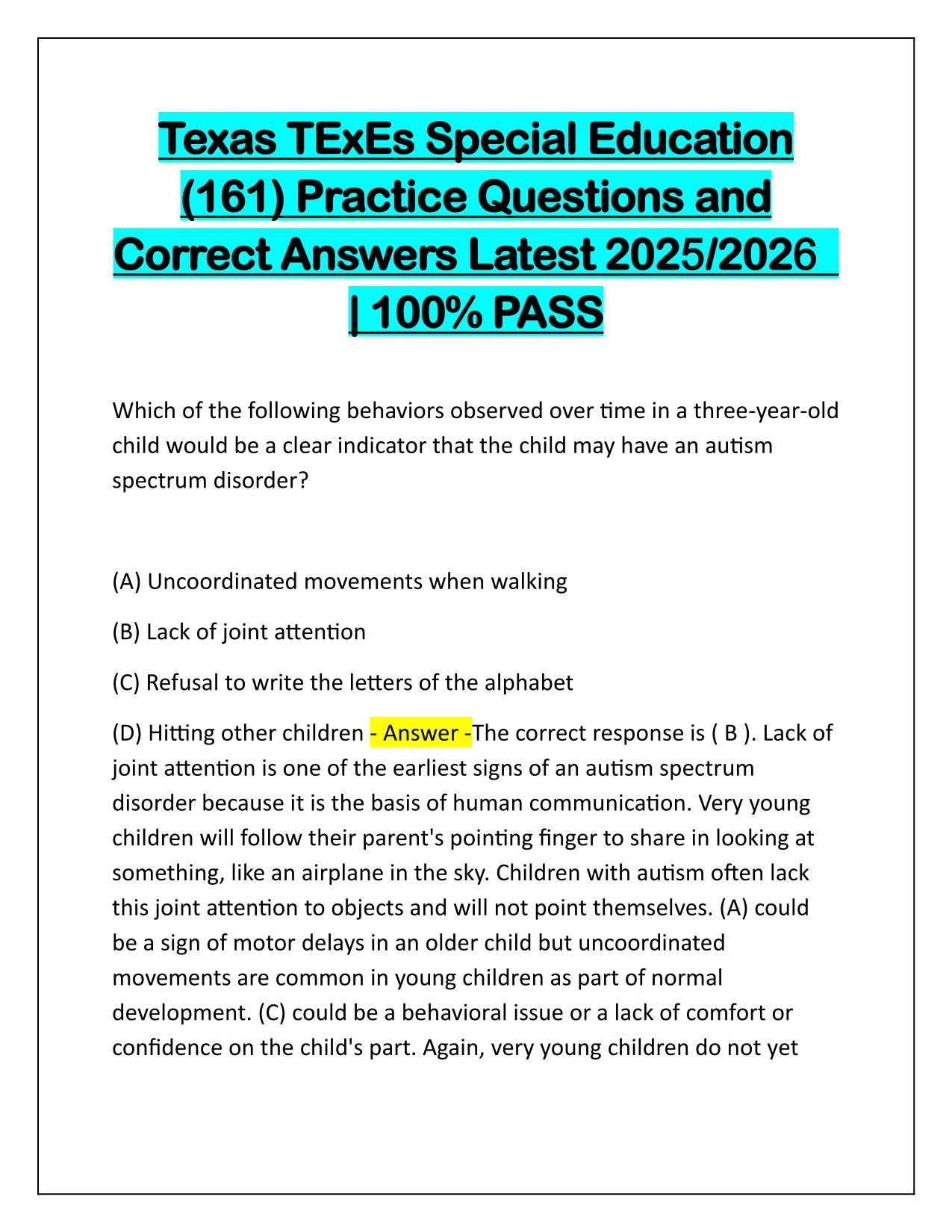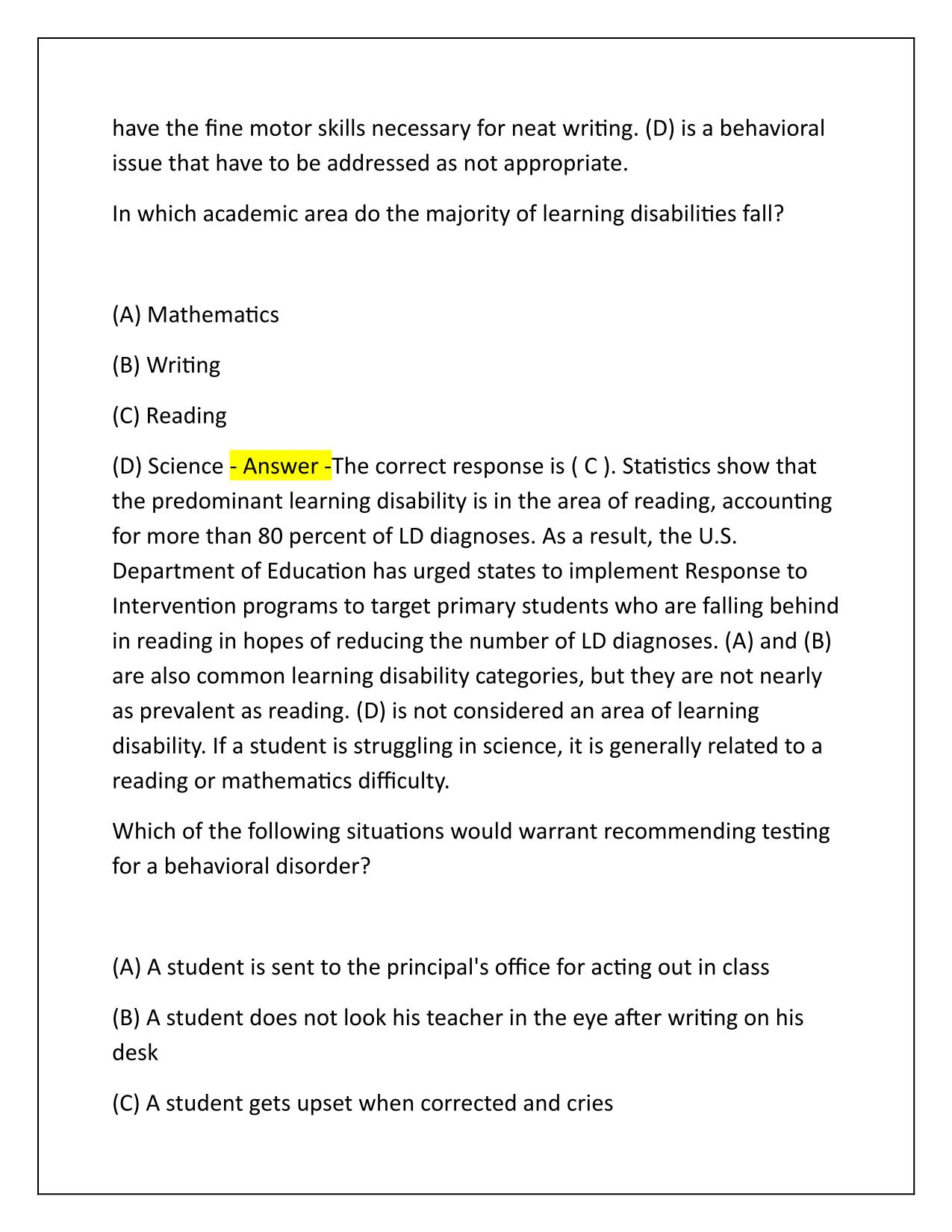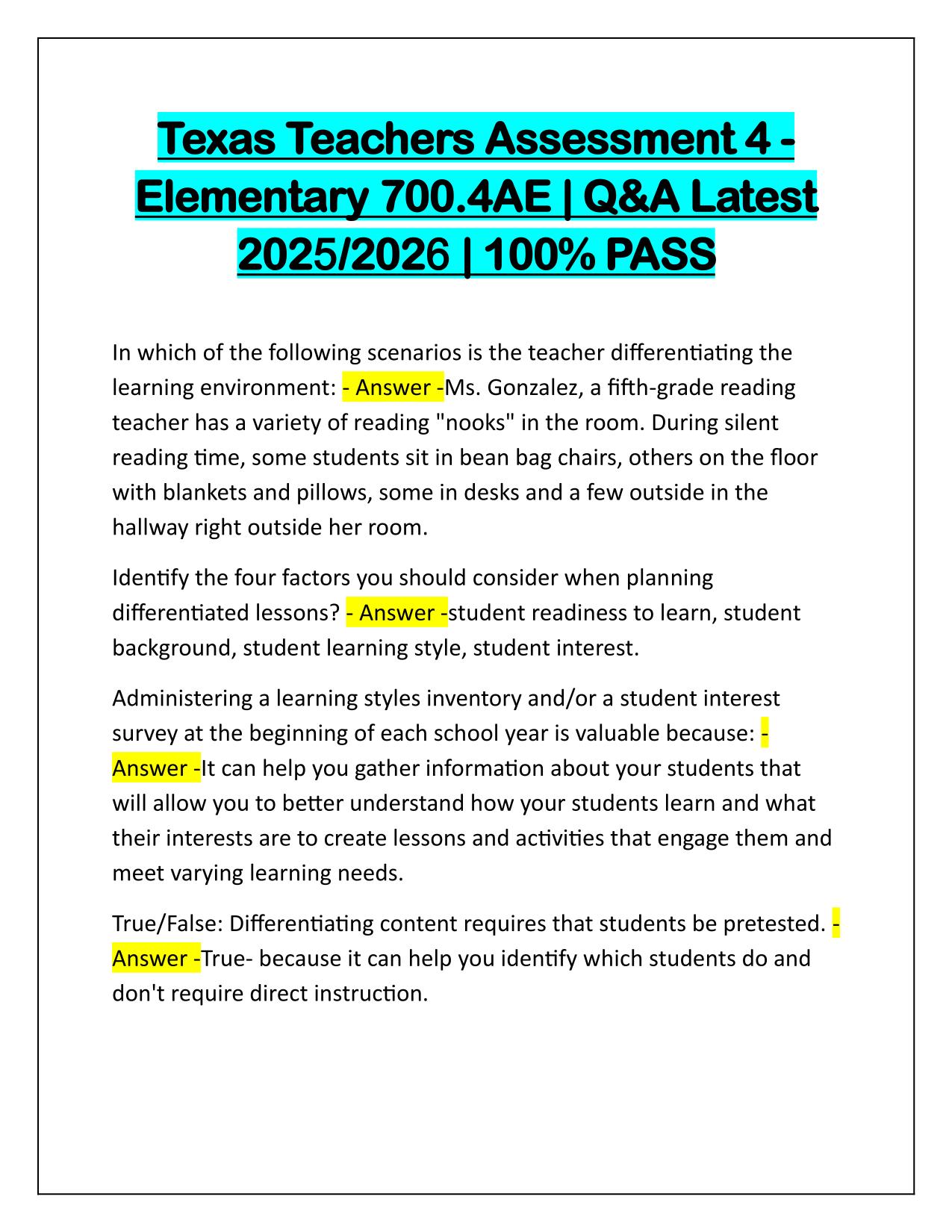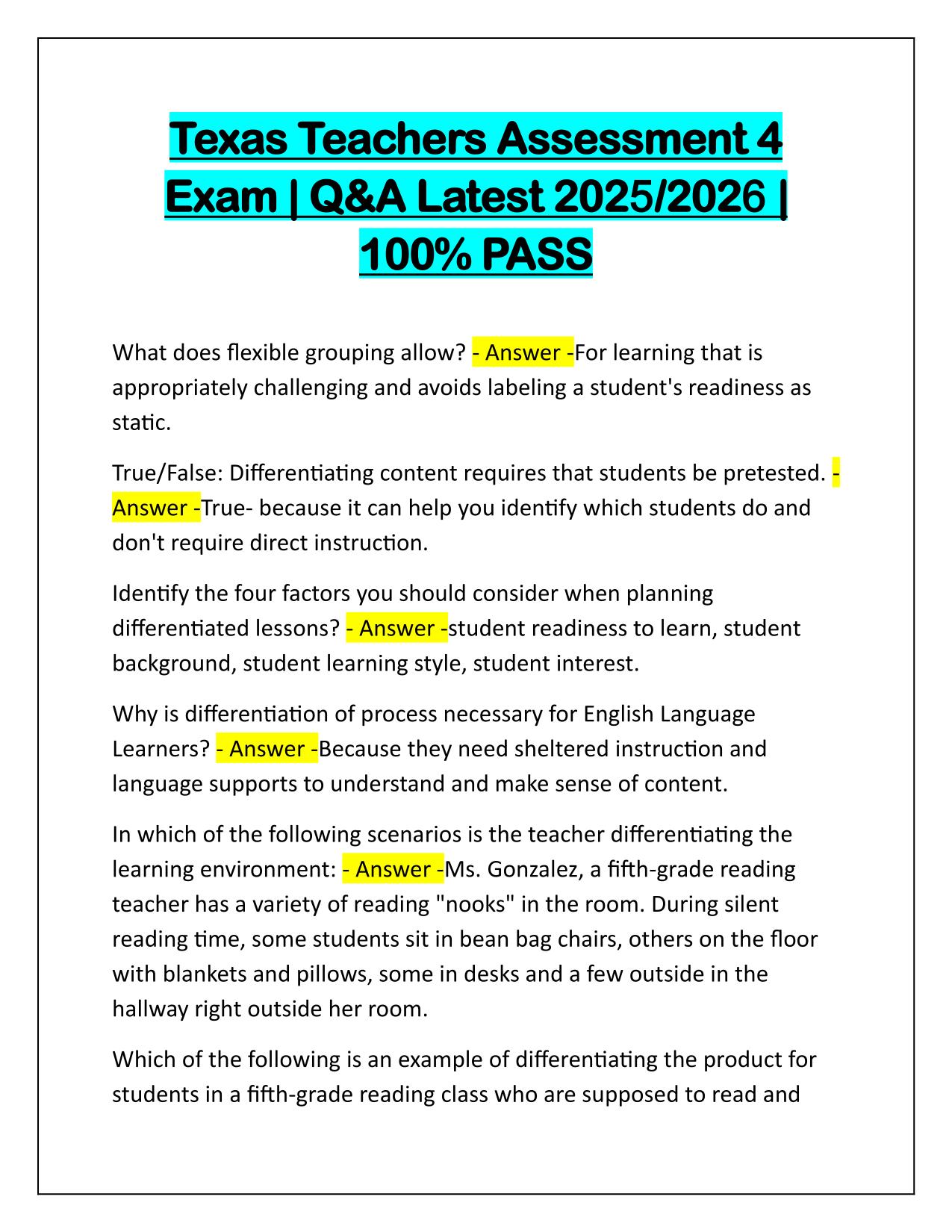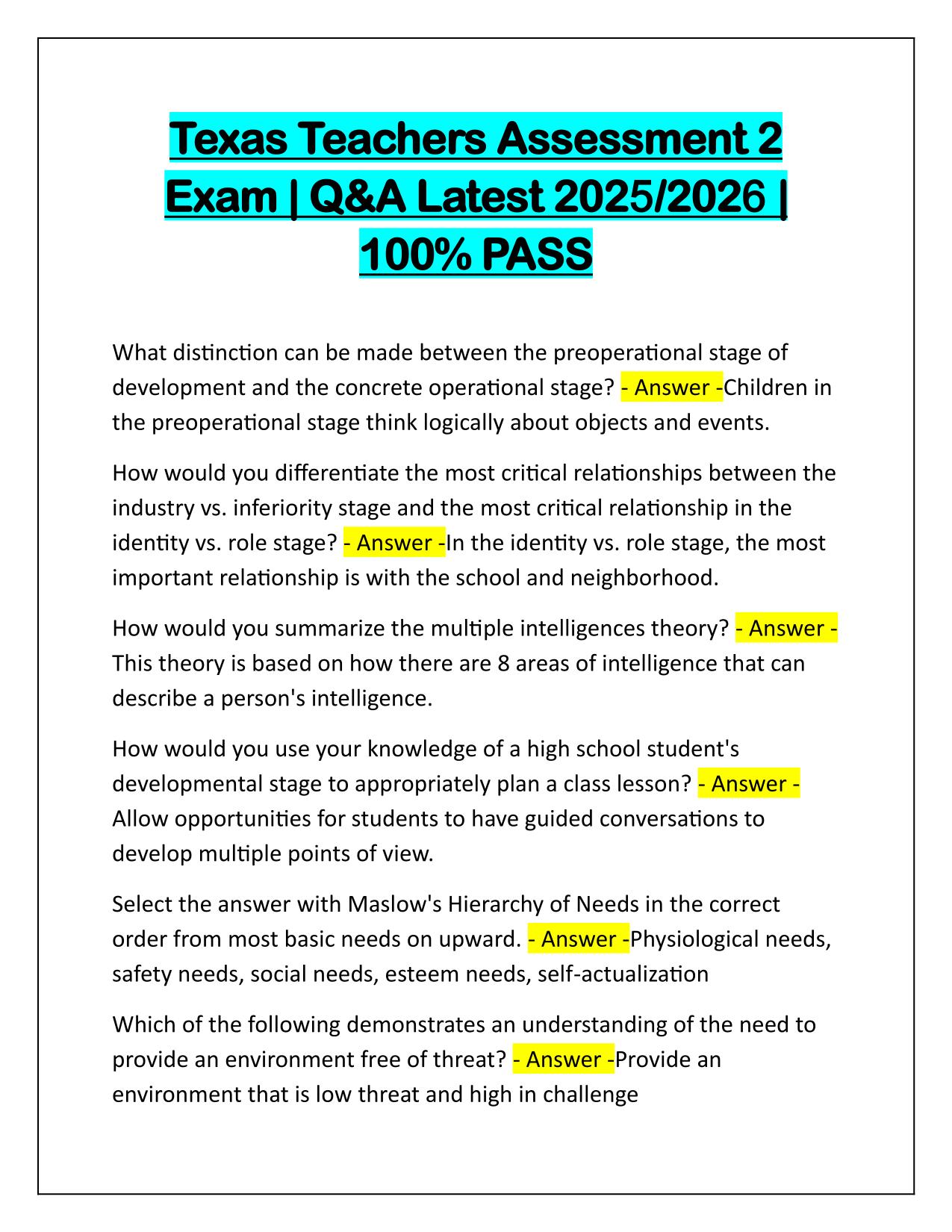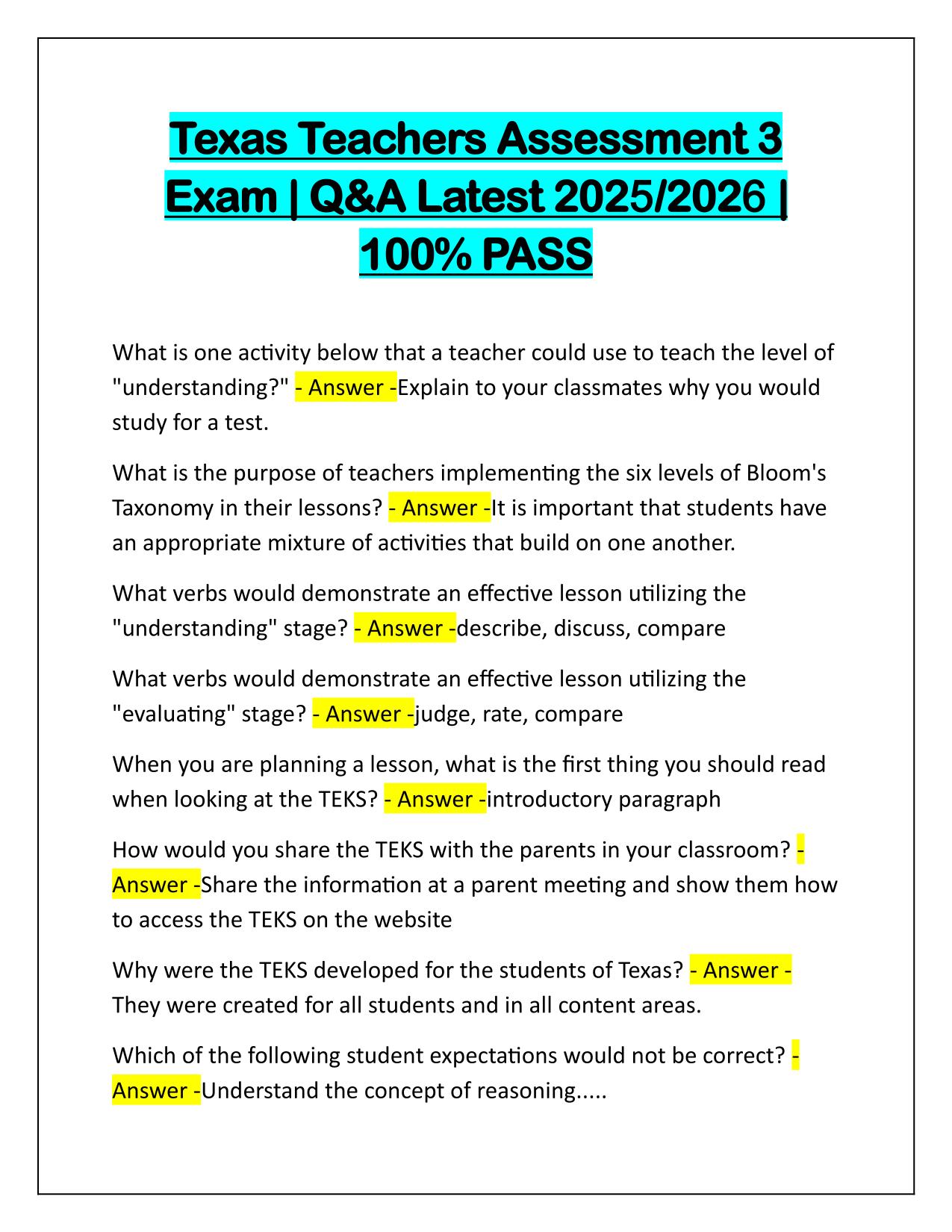Texas TExEs Special Education (161) Practice Q&A Latest Update
Course:
Texas Teachers
Institution:
Texas Teachers
Texas TExEs Special Education (161) Practice Q&A Latest Update
After purchase, you get:
✅ Instant PDF Download
✅ Verified answer explanations
✅ Refund if not Satisfied
✅ Prepared for 2025/2026 test cycle
Document Information
| Uploaded on: | May 1, 2025 |
| Last updated: | May 3, 2025 |
| Number of pages: | 29 |
| Written in: | 2025/2026 |
| Type: | Exam (elaborations) |
| Contains: | Questions & Answers |
| Tags: | Texas TExEs Special Education (161) Practice Q&A Latest Update |
Seller Information

AdelineJean
User Reviews (0)
Exam (Elaborations)
$10.00
Bundle Deal! Get all 15 docs for just $29.99
Add to Cart
100% satisfaction guarantee
Refund Upon dissatisfaction
Immediately available after purchase
Available in Both online and PDF
$10.00
| 0 sold
Related Documents
Available in a Bundle
Content Preview
Texas TExEs Special Education (161) Practice Questions and Correct Answers Latest 2025/2026 | 100% PASS Which of the following behaviors observed over time in a three-year-old child would be a clear indicator that the child may have an autism spectrum disorder? (A) Uncoordinated movements when walking (B) Lack of joint attention (C) Refusal to write the letters of the alphabet (D) Hitting other children - Answer -The correct response is ( B ). Lack of joint attention is one of the earliest signs of an autism spectrum disorder because it is the basis of human communication. Very young children will follow their parent's pointing finger to share in looking at something, like an airplane in the sky. Children with autism often lack this joint attention to objects and will not point themselves. (A) could be a sign of motor delays in an older child but uncoordinated movements are common in young children as part of normal development. (C) could be a behavioral issue or a lack of comfort or confidence on the child's part. Again, very young children do not yet
